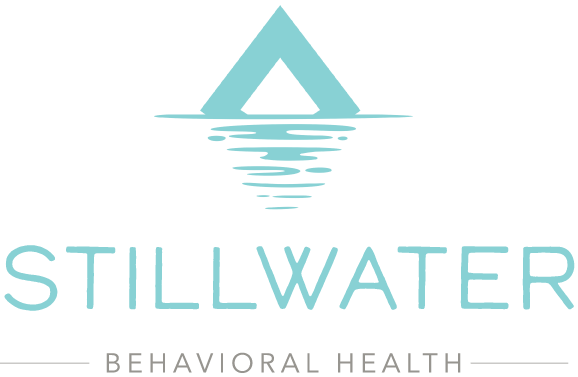How Long Does Xanax Stay in Your System?
How long does Xanax stay in your system? Learn more about Xanax, its effects, and how long it lasts in your bloodstream.
What is Xanax?
Xanax, also sold under the generic name alprazolam, is a short-acting benzodiazepine prescribed to treat various anxiety disorders. Since this is a commonly abused medication, it often appears in drug screening tests.1
So how long does Xanax stay in your system? It depends on various factors, including how much you’ve used, how long, and what type of drug test is being taken.
In medical terms, Xanax is an anxiolytic used to reduce anxiety. Taking Xanax can help people with generalized anxiety, panic disorders, or even agoraphobia. The side effects of Xanax make it generally only prescribed for short-term use, and Xanax abuse can quickly lead to addiction.2

Questions about addiction?
Call Us Now: 1-866-232-9103
Your call is confidential with no obligation required to speak with us.
What Does Xanax Do?
Taking Xanax slows down the central nervous system. This is part of the reason for its anxiety-reducing effects, as the central nervous system becomes overactive when people experience anxiety. This effect helps people relax, take deep breaths, and experience anxiety much less intensely.
What Does Xanax Look Like?
Xanax, and the generic version alprazolam, come in various shapes and sizes. The most common form of Xanax is the 2mg variety, shaped like a long rectangle and divided into four sections. These are commonly referred to as Xanax “bars.”
How Long Does Xanax Take to Work?
Compared to other benzodiazepines, Xanax works very quickly. You can feel the effects in as little as five to ten minutes and the full effect within one or two hours.
How Long Does Xanax Stay in Your System?
Xanax typically stays in your system for two to four days when taken as prescribed. Yet, some Xanax drug tests can detect the substance for longer periods.
Xanax Half-Life
The half-life of Xanax is essential to understanding how rapidly Xanax is removed from your system. Xanax’s half-life is about 11 hours, which means that 50% of the drug is eliminated. To reach 98% elimination, it takes six full half-life cycles — or 66 hours, about three days.3
How Long Does Xanax Stay in Your Urine?
Drugs are eliminated through the kidneys, meaning they leave the body through the urine. Alprazolam urine detection time is typically in line with the 98% elimination time so that a urine test can detect Xanax for about three to four days. People taking larger quantities of Xanax can fail a urine test for up to seven days.
How Long Does Xanax Stay in Your Blood?
Blood tests are a less common method for Xanax and are typically only used during medical emergencies. These tests can detect whether Xanax has been taken in the last 24 hours. This helps medical professionals determine whether somebody is currently experiencing the effects of Xanax.
How Long Does Xanax Stay in Your Hair?
Hair tests are, by far, the drug test that can detect Xanax for the longest periods. Hair follicle tests can detect whether Xanax has been used for up to 90 days.
How Long Does Xanax Stay in Your Saliva?
Saliva tests can detect Xanax in your system for about two-and-a-half days since your last dose.
Factors that Affect How Long Xanax Stays in Your System
While the numbers above give general guidelines, several factors can affect how long Xanax can be detected in your system by a drug test. The following factors influence the half-life of Xanax:
- Genetics
- Dosage
- Duration of use
- Frequency of use
- Age
- Weight
- Metabolism
Looking back to the Xanax half-life duration, we see that percentages eliminate the substance. But drug tests aren’t looking for percentage; they’re looking for a measurable quantity of the drug. That means that if a person takes large amounts of Xanax, they may have detectable amounts in their system for a much longer period. This is something to take into consideration.
Alternatively, people with slower metabolisms may not break down Xanax as efficiently as others. This is particularly common in older people, where drugs can be detected in the urine for much longer. Additionally, several factors can influence the speed of one’s metabolism, including weight, gender, and genetics.

Xanax Abuse Symptoms and Side Effects
The anxiety-reducing effects of this drug make Xanax abuse exceedingly common. Despite being a controlled substance, benzodiazepine misuse is on the rise and can quickly lead to addiction if left untreated.3
Xanax Abuse Symptoms
Signs of Xanax abuse include:
- Slurred speech
- Drowsiness
- Reduced motor coordination
- Loss of interest in other activities
- Buying Xanax on the street
Inability to stop using on your own - Withdrawal symptoms if use is suddenly stopped
If you or a loved one is showing signs of Xanax abuse, you should seek treatment at once.
Common Side Effects of Xanax
The side effects of Xanax can be particularly harmful— especially withdrawal symptoms. There can be life-threatening consequences of suddenly stopping Xanax, meaning it’s crucial to seek medical care to achieve abstinence. Common side effects of Xanax and Xanax withdrawal include:
- Memory loss
- Seizures
- Shakes
- Delirium
- Anxiety
- Drug cravings
- Headaches
- Sweating
- Blurred vision
When you’re ready to stop using Xanax, it’s essential that you seek medical care and don’t attempt to quit on your own. Seizures from withdrawal often result in death and should be addressed with the help of trained medical professionals.4
Get Help for Xanax Abuse
When you’re ready to get help for Xanax abuse, contact the professionals at Stillwater Behavioral Health. Our trained team of skilled and empathetic addiction specialists can help you overcome the dangerous symptoms of withdrawal, teach you how to live sober, and help you regain the quality of life you had before developing an addiction. Both you and your loved ones deserve to live a fulfilling life unriddled with the constraints of addiction.
Available treatment options include:
- Medical detoxification
- Dual-diagnosis treatment
- Cognitive-behavioral therapy
- Luxury inpatient addiction treatment
- Medication-assisted therapy
- Group, individual, and family therapy options
- Comprehensive aftercare planning
These treatments are evidence-based, comprehensive, and proven to help you overcome the disease of addiction.
We know how hard it can be to overcome a substance use disorder, but you don’t have to do it alone. Recovery is possible, and the professional addiction treatment team at Stillwater Behavioral Health can show you how.
Resources
- https://www.webmd.com/connect-to-care/addiction-treatment-recovery/prescription/is-xanax-addictive
- https://www.aafp.org/afp/2000/0401/p2121.html?simple=True
- https://www.webmd.com/mental-health/addiction/news/20181227/evidence-shows-abuse-of-xanax-valium-on-the-rise
- https://psycnet.apa.org/record/1988-33915-001


